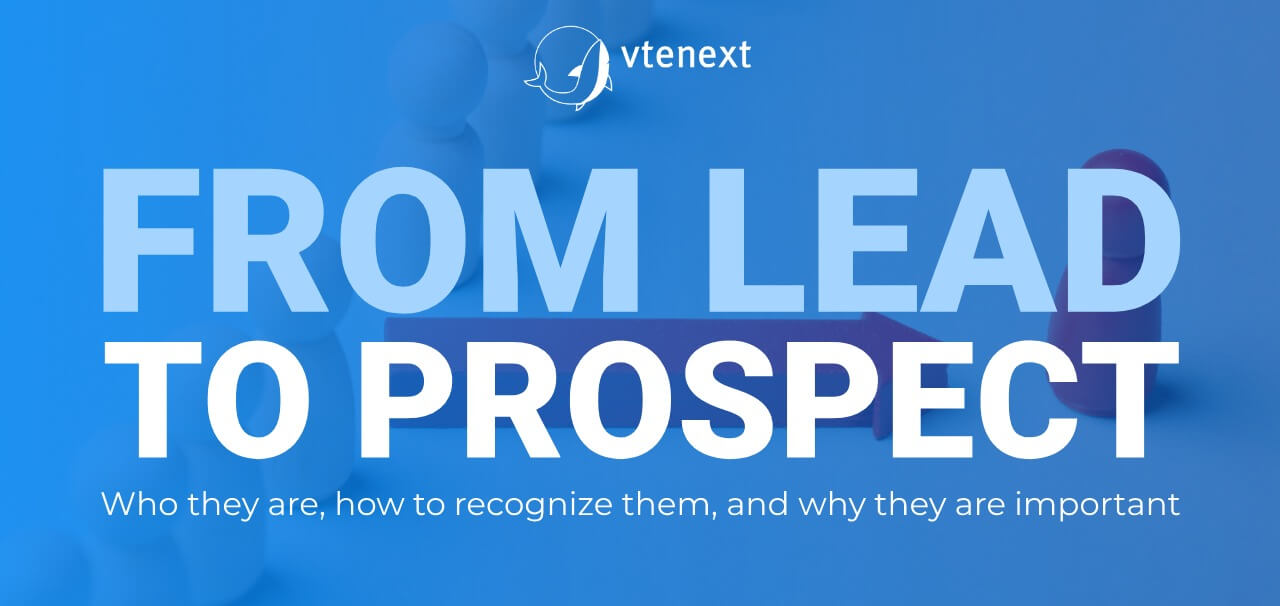Being able to recognize different types of customers and find a classification system that fits perfectly with your business is essential and allows you to develop an effective sales strategy, to understand which ones have the greatest potential for establishing meaningful interactions.
One of the most common classifications recognizes prospects as users still in the initial phase of the sales process: knowing them and studying them helps to study the most precise system to attract them and then turn them into loyal customers.
What are prospects
It doesn’t exist a shared definition, nor agreement among marketers on where to place each type of customer within the sales funnel and the same applies for a prospect.
Usually, a person who has shown genuine interest in the products or services offered by a company is called “prospect”: it is a potential customer who, besides meeting specific requirements, has also already interacted significantly with the company. It is necessary that each company has defined its own prospect identikit, modelled on the basis of the reference sector and the products or services offered.
Identifying those who have shown interest and want to find out more is vital if you want to develop an effective sales strategy that allows to implement targeted marketing systems that accompany these prospects along the sales funnel, until the time of conversion into customers.
Compiling a list of prospects and developing specific communication are fundamental activities to establish business relationships, increasing the chances of successful sales.
Differences with the lead
Very often the concepts of prospect and lead tend to be confused. In reality, these are two separate entities: prospects are pre-qualified individuals, that is people who meet certain criteria set by the company; on the contrary, leads are still in a preliminary stage and have not reached the status of prospect.
In this early stage, lead information is often insufficient to determine their real potential as customers and this happens because you don’t know enough details to understand if they meet the target requirements for a given product or service.
Another significant difference is interaction: leads are usually limited to gathering information from the company, while prospects are already involved in a more active dialogue, often through various communication channels.
Companies tend to treat leads as a homogeneous group, using tools like promotional emails to interact with them; prospects, on the other hand, receive more personalized attention: the company tries to understand their specific interests and explain how its products or services can meet their needs.
The sales process starts from the collection of leads, using email marketing or site subscriptions, and goes to the transformation of leads into prospects, then applying the rest of the sales strategy to those who have passed the qualification.
Differences with the contact
Very often, when we talk about prospects, the term “contact” is also used: in this case the definition is even more nebulous. In many cases the contact is nothing more than a potential customer whose contacts you only have but do not have other information about.
These people should then be contacted, so that it is known whether they can be considered potential customers and at what stage of the sales process they are located.
How to individuate prospects
The prospect identification is therefore a necessary activity, but at the same time it contains some complexities that can be overcome with the help of tools such as the one provided by the CRM of VTENEXT.
A solid consumer relations strategy is the starting point for every company: the growth of a company is linked to the expansion of its customers and to the strengthening of ties with them, where customer satisfaction is put at the center for maintaining competitiveness.
First, it is necessary to consider that the largest part of a company’s earnings is contributed by a small share of customers, which, at the same time, provides a set of data of great value, thanks to which it is possible to obtain information about the behaviour of the one that should be our type customer. Analyzing the customer base allows you to predict their future behaviour and to evaluate prospects for developing the relationship.
Taking competitors’ users into account can be a good strategy: those who appreciate the products of competitors could easily appreciate also our products. It is useful to do research, such as exploring the social media of competitors, analyzing content, comments and followers profiles. Observing other’s promotional content offers clues about what users like, giving indications on what you can use in your own marketing strategy.
Another useful tool is the creation of buyer personas, that is ideal customer descriptions based on fictitious but realistic personalities and which represent with precision who buys the products, allowing to calibrate the tone of communication and marketing strategies. The buyer persona is nothing more than a reflection of real customer characteristics, often derived from extensive research.
Understanding who your prospects are, you can create more effective content, such as blog posts, emails and landing pages, which greatly improves conversion rates. It is normal that a company has several buyer personas: each product or service can attract different profiles, each corresponding to a specific portrait. Even in this case, the analysis of customer data facilitates the creation of multiple buyer persona, thus optimizing the accuracy of the marketing approach.

